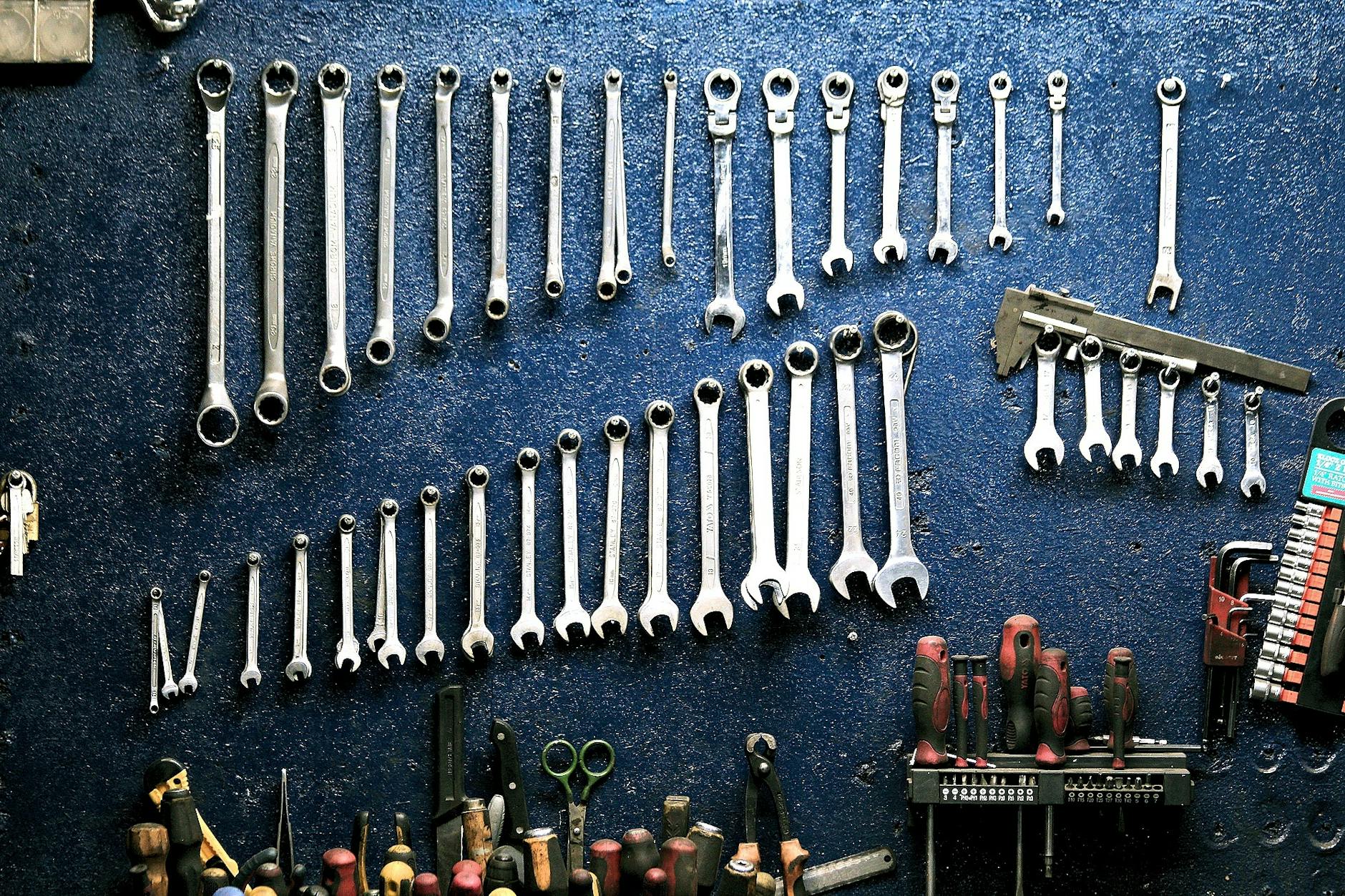Having faced some issues with my truck and spending hundreds of dollars on repairs, I was interested to know what it took to jack up a truck. I did some research, and below is everything I found out.
How can you jack up a truck effortlessly? You need to identify the lift points and support locations for your truck. Slide the jack under the car, and pump the handle down and up to start raising your truck.
Although jacking up a truck may sound tedious, it something that takes time and practice to perfect. Below is everything you need to learn on how to jack up a truck, and mistakes to avoid in the process.
Tools You’ll Need To Jack Up A Truck

image source: Pexels
Safety Precautions When Jacking Up A Truck

image source: Pexels
It’s essential to take the right safety precautions when jacking up a truck. These include:
Always Use Jack Stands When Working Underneath The Vehicle

image source: Pexels
Cases of people being crushed to death when working underneath their vehicles are common. You don’t want an improperly secured truck to fall on you when making repairs. Use a jack stand to ensure you’re safe during the process.
Jack stands have a design to lock into place and support the car’s weight mechanically after raising it in the air. Have the jack stand in a nearby lift point.
Always Park The Truck On Level Ground
Do not attempt to jack up a vehicle on a hill. Try to park the car close to the curb, and turn the wheels toward the curb. You need to block the rear wheels to ensure the car doesn’t roll. Use metal wheel chocks, bricks, or wooden wedges to block the wheels.
Select The Right Jack
You need to check the amount of weight that a jack can support, which technicians refer to as weight rating if you decide to buy a jack. The weight rating is in tons. First, check the truck’s curb weight on the manual, and find a jack that can handle 25% more of this weight.
For example, if your truck weighs 2 ton, you need a 2.5-ton jack, as this ensures that you do not operate at the edge of the jack’s abilities.
It’s also essential to choose the best jack design for your truck. Hydraulic floor jacks work well for sedans and low-slung sports car. A scissor-type jack or a pop-up hydraulic bottle jack is ideal for trucks and taller vehicles because they give you more height to lift the vehicle. Go for the Hi-Lift jack if your car is high enough.
Moreover, you need to maintain your jack. Always inspect the jack before each use to ensure there are no structural cracks or leaks. Replace it if you find cracks on it. You don’t want a jack that fails when lifting your truck.
Get Some Quality Wheel Chocks
You need to invest in a set of wheel chocks when jacking up your truck. Place the wheel chocks on every wheel on the opposite side of where you plan to lift the vehicle. For example, if you need to lift the front right side, put a wheel chock on the left rear tires to prevent the car from moving or rolling. However, you can use a heavy rock or a block of wood in place of wheel chocks.
Find The Truck’s Jacking Points
You’ll need to determine the factory lift points when learning how to jack up a truck. The best place to get this information is on the manual. Most jacking points are on the frame rails or the pinch welds along the base of the unibody edge.
Some trucks have differentials or suspension mount points, while others come with unique reinforced jack points. Never assume that any point you pick is safe as you may expose yourself to a dangerous situation or damage the vehicle.
Never Improvise A Jack Extension
If you have a car with high ground clearance, do not improvise a jack extension to use a jack with a low maximum height. The extension is unsafe as it could tip off when you lift your vehicle. Always get a jack that works on raised vehicles.
Step By Step On How To Jack Up A Truck Effortlessly

image source: Pexels
Below is a detailed guide on how to jack up a truck. If it’s your first time doing this, you may want to get the help of a professional mechanic for your service needs.
Step 1. Find A Level Ground
If you’re driving on a bumpy surface, you first need to park the car on a flat, level surface. Ensure that there are no moving vehicles to avoid dangerous situations. Find a sturdy and hard surface as this keeps your truck in place while working.
A sloppy area may cause the car to lean on the stands, which results in a tip over. Avoid jacking up a truck on dirt, soft surfaces, gravel, or smooth surfaces.
Step 2: Secure The Truck
Put the car in first gear or park gear after moving the vehicle into position. If you’re raising the front wheels off the ground, put the parking brake and place the wheel chocks behind the back wheels. When lifting the rear wheels off the ground, the parking brake won’t have any effect. You need to place the chocks in front.
Step 3:
Get the jack and ensure that the valve is not open. If it’s not, close it by adjusting the lever.
Step 4: Find A Safe Jack Point
A safe point to place the jack is somewhere designed to be exposed to the jack. It could be a place that supports the overall weight of a vehicle. Read the owner’s manual to determine the areas of the truck’s jack points,
Jack points are near the wheels, mostly between the back wheels and the other in the middle of the front wheels. Make sure that the jack is in contact with an unpainted and sturdy part of the car’s frame.
Step 5: Slip The Jack Underneath
Slip the jack beneath the vehicle in the jack point. Place the jack in the rear of the wheel to put up one of the front wheels. Do the same on the wheel’s front to lift either of the back wheels.
It’s possible to raise either rear or front wheels, by using the jack point halfway between the rear and front wheels. A few cars come with a specific jack point that allows you to place the jack under the subframe.
Check to ensure that the jack is not under the radiator, oil pan, or steering rack. You can use the differential as the jack point when raising both rear wheels. Nonetheless, you need to be sure to avoid damaging the vehicle.
Step 6: Adjust Jack’s Position To Be In Connection With The Jack Point
Look under the truck and adjust the location of the jack. Ensure that it connects with the jack point when lifted. Place the jack such that it doesn’t slide past the jack point.
Step 7: Thrust The Jack Handle
Start raising your truck by pumping the jack handle down and back up. Take time to lift the vehicle and check if the jack is in touch with the jack point. You can open the release valve to pull down the jack back.
Shut the release valve and move the jack to touch the jack point. Raise the car until you achieve the height you’d like. Remember that a high enough height enables you to put the stands in place.
Step 8: Place The Jack Stands
Slip the jack stands into place next to the jack, below in a safe area on the truck’s frame. Place the to the jack’s side, next to the wheels if you’re raising both rear and front wheels.
Step 9: Remove The Jack
In slow motion, open the jack’s release valve to lower the car until it sits on the stand. After supporting the bulk of the vehicle on the stand, you can take out the jack. Alternatively, you can leave it in place.
Step 10: Remove The Stand
After you’ve done the repairs and serviced your truck, take the jack to lift it an inch, and do away with the stand. Open the jack’s valve to take down the car to the ground safely. Take off the jack.
Using The Rear Differential To Jack Up Your Truck

image source: Pexels
Most mechanics use the rear diff as their jack points under the vehicle. The differential has a design that allows it to support the load of your truck. You won’t have a problem propping up the car in the air.
Nevertheless, you need to get the proper equipment as using the rear diff comes with increased risk. It’s best to get a quality hydraulic floor jack and stands that work with the weight of your vehicle.
Make sure that you’re on a level surface, and not on an incline. Use the wheel chocks in the front tires before getting the rear end of the truck in the air. The process ensures that the car won’t roll forward and fail off the jack before placing the stands in place.
The jack should have a rubber boot on the lifting point. Use some shop rags to prevent gouging or scratching the diff. Be careful to make sure that the jack is in contact with the diff. Check to see that no part of the jack is under pressure.
Also, there shouldn’t be any contact with the aluminum differential cover, as this could be damaged. After getting the vehicle up in the air, put the stands underneath the truck before you begin any maintenance or repairs.
Remember that you should not lift on the drive-axle housing or any drive-train element when you have a loaded vehicle. Do not lift on any moving part of the suspension system or the end of the U-bolts.
The jack stand or the jack should not lift or be in contact with the truck at an angle. Avoid using a single stand in the middle to support both sides of the axle. Also, ensure that the jack’s saddle is at the center of the lift point.
When using the differential to raise the drive axle, make sure that the jack is not in contact with the drain plug. You don’t want to deal with damage because of lifting a fully loaded truck or doing so in the center of the axle tube. It’s essential to raise and support the axle on both ends.
Caring For Your Tools
Always store the jacks that are not in use with the ram and the extender fully retracted, this prevents corrosion and rust on the threads, oil the extender to maintain the full lifting height of the jack.
Don’t forget to tighten the release valve. Store the jack in an upright position in a place free of moisture. If you need to replenish oil on your jack, follow the instructions that came with the manual. Also, do this if you plan to make any repairs on the stands and the jacks.
Final Thoughts
We hope that you now have an idea on how to jack up a truck effortlessly. Being patient, using the right tools, and being cautious can help you perform any maintenance. Always use the jack, and the jack stands correctly and follow the steps outlined, and in no time, you’ll find the process of jacking up a truck simple and straightforward.

